Polygonia satyrus
pa-lih-GOH-nee-uhmm
sah-TEER-us
(Edwards, 1869) satyrus
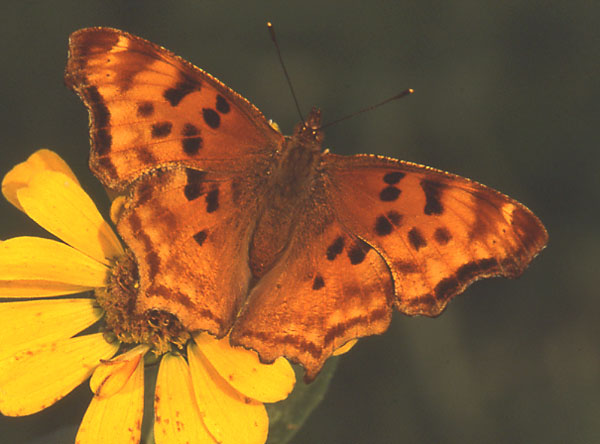
Polygonia satyrus, California, courtesy of Leroy Simon.
Superfamily: Papilionoidea Latreille, [1802]
Family: Nymphalidae, Rafinesque, 1815
Subfamily: Nymphalinae, Rafinesque, 1815
Tribe: Nymphalini Rafinesque, 1815
Genus: Polygonia: Hübner, 1819 |
Website designed and maintained
by Bill Oehlke
Box 476, Montague
Prince Edward Island, Canada C0A 1R0
oehlkew@islandtelecom.com
|
Distribution:
The Satyr Comma, Polygonia satyrus
(wingspan 1.8 - 2.0"), ranges throughout the
western third of the United States and then becomes a northern
species from Saskatchewan eastward to Prince Edward Island, Canada.
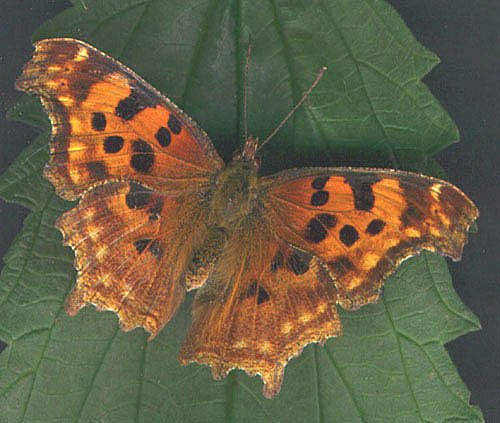
Female Polygonia satyrus
butterfly on nettle leaf, ex egg, May 9;
ex pupa June 7, 1999, Montague, Prince Edward Island, Canada,
Bill Oehlke.
Description:
The upperside is bright yellow-orange. The
forewing has two black spots near the center of the bottom edge.
The hindwing lacks a dark border, but has a black spot in the
center of the wing.
The underside is light and dark golden brown,
with a relatively straight median band. The hindwing has
a silver comma in the center of the wing.
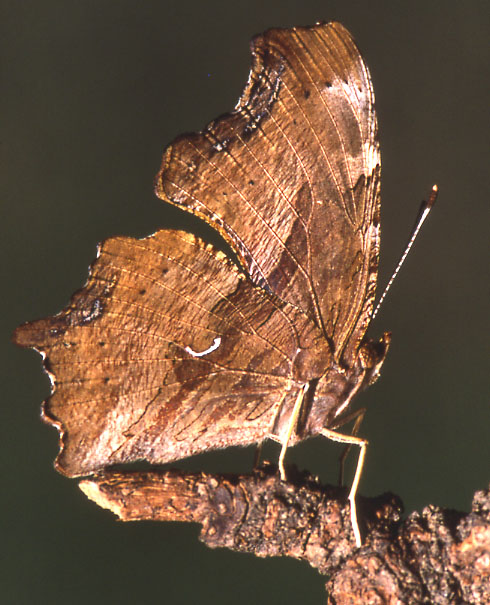
Polygonia satyrus, California, courtesy of Leroy Simon.
Flight time(s) and Adult Food Sources:
The Satyr Comma butterfly hibernates as an adult in the shelter of
wood piles, beneath loose bark, etc., and is on the wing as soon as
the first warm rays of late winter or spring sun can rouse it.
Butterflies take nutrients from sap and fungi.
Eggs, Larvae, Pupae:
On May 6, 1999, after six days of unseasonably warm
temperatures (low 70's) for P.E.I., I spotted a female
Polygonia satyrus ovipositing on some nettles (4-6"high).
She did not seem to have a great deal of energy and drifted
lazily over a clump of nettles about 2.5 feet in diameter,
frequently landing and ovipositing.
During the next two weeks I found fifty
larvae/eggs on these nettles and a few more on a nearby clump.
Pale green eggs were deposited on the undersides of the host
foliage, usually on lower leaves on the outer fringe of a cluster of
nettles. Eggs, which darkened considerably just before emergence,
were brought indoors and emerged on May 9. |
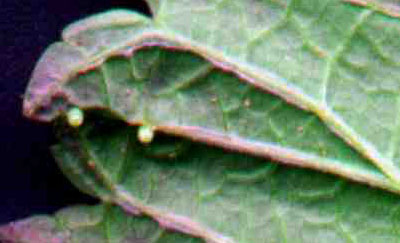 |
Larval Development:
Under warm conditions, incubation takes only three-four days, and
tiny black satyr comma larvae begin eating holes from the underside
of host foliage.Looking for the holes and then gently
turning over leaves usually results in the discovery of larvae.
Nettles can give a nasty little sting
that will burn for a few miutes so be careful or wear gloves. |
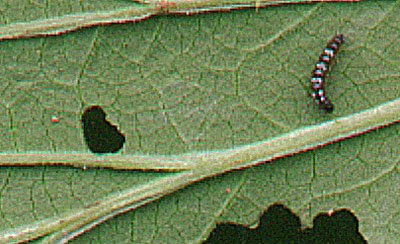 |
By May 16, several larvae had moved into second instar and they continued
eating holes from the inner portions of the leaf, always feeding from the underside.
Growth is rapid under indoor heat with nettle cut ends wrapped in moist
towelling surrounded by foil in tightly lidded 3.6 litre buckets.
Satyr comma caterpillars take on quite a bit more white colouration both in body and spines as
they
move into final instar (May 21).
This larva began feeding while being scanned.
| 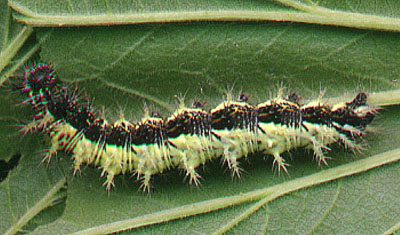 |
On May 28, just 19 days after emerging from its egg, the first larva made this
chrysalis.
A strong silk pad was formed on a leaf stem and then the larva hung,
upside down,
and shed its skin to form the highly angled pupa.
Many Polygonia satyrus pupae hung from the underside of
the plastic container lid.
Gently scraping the silk pad with a knife and subsequently removing pupae to a brown paper
emerging bag and letting them
lie on a paper towel did not impede eclosions about nine days later. |
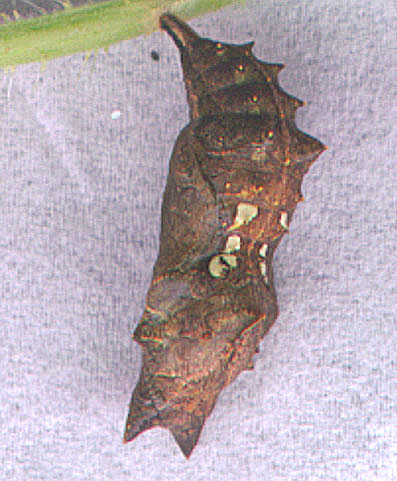 |
The males (r) had much more patterning on the underside and were a bit smaller than
females (l).
I saved some specimens for requests, but released the majority of the butterflies.
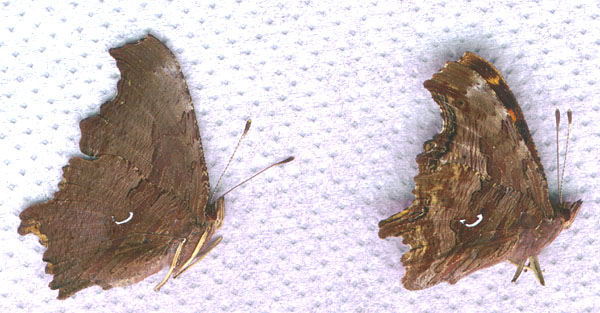
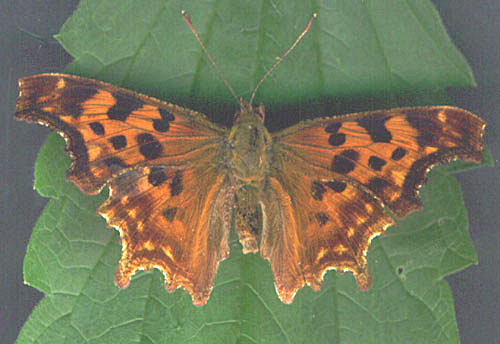
Male Polygonia satyrus,
ex egg June 10, scan by Bill Oehlke.
Use your browser "Back" button to return to the previous page.
Visit other websites maintained by Bill Oehlke:
+++LIVESTOCK AND SUPPLIES FOR SALE***
This site is designed and
maintained
by Bill Oehlke. You can reach Bill for questions
by clicking on his name (email) or by phone 902-838-3455,
or at Bill Oehlke,
Box 476, Montague, P.E.I., Canada C0A 1R0.
I offer two membership sites that far exceed the
coverage offered
on the sites listed above:
THE WORLD'S LARGEST SATURNIIDAE SITE and
CATERPILLARS TOO!








